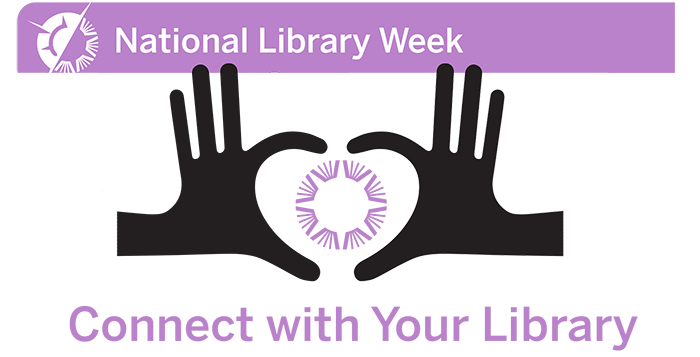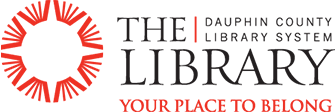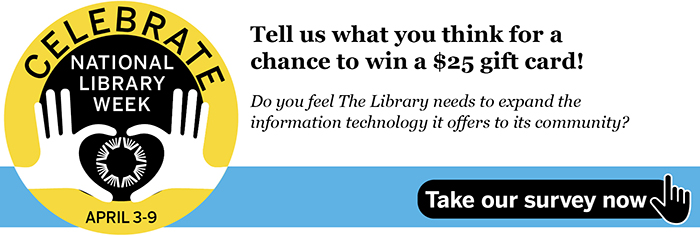
Let The Library know what tech you’d like to see by filling out an online survey
Card catalogs are in high demand – on the eBay antique furniture page. And yet, they were a staple of libraries as recently as 30 years ago. In this age of lightning-fast change, Dauphin County Library System has kept pace and captured technology as a tool for outreach and forging connections into and within the community.
Around the early 1990s, The Library’s card catalogs were replaced by a computerized catalog, making them “an item of historical interest,” recalls Executive Director Karen Cullings, who began her Library career in those years.
But even the computerized catalog didn’t last long. In the three decades since, Cullings says, she’s witnessed the life-changing benefits that The Library has brought to the community via advances in technology.
· To learn more about the kind of technology members use and want more of, The Library has launched an online survey. Help The Library plan for the future by visiting dcls.org/ConnectSurvey and taking a few moments to answer the questions.
“What hasn’t changed is The Library’s commitment to being ‘your place to belong,’” she emphasizes. “Whatever your information or connection need, we exist to help you meet it — either by providing direct access to information or service or by connecting you with another community service that can deliver what you need.”
Here’s a short list of Digital Age upgrades, all of them solidifying The Library’s role as a community hub for information and connection:
- The Library at your fingertips: The old “dumb,” minimally connected terminals of the original computerized catalog quickly became as obsolete as their card-catalog predecessors. Those terminals were replaced by PCs that are, today, heavily used at every Library. Plus, the computerized catalog itself was replaced by increasingly sophisticated Integrated Library System software, allowing Library users to find just the right resource from home, on the move, or at a Library.
- Digital access: In the early days of this revolution, putting information on floppy disks or CDs was high-tech. Now, guests can visit The Library website at www.dcls.org and download content digitally. Electronic databases, eBooks, eAudiobooks, online magazines – it’s all instantly available, and free, to any user with a Library card. Marketing and Public Relations Manager Christina Lauver says that her son, a high school junior, recently produced a research paper using Library resources, without setting foot in a Library building.
- Electronic communications: Once, a telephone call or a letter was the only way to contact a librarian outside the premises. Now, guests and members from all over the nation, and the world, can reach out to The Library’s knowledgeable librarians via chat and email. One of the most popular new offerings during the pandemic was The Library’s “BookAdvisor” feature, allowing entertainment-starved readers to request personalized book recommendations. Technology can be “both connecting and isolating,” says Cullings. “People missed talking to other people.”
- Electronic communications II: In a sprawling county, Library employees once had to reach each other via phone, mail, and drives across country roads, city streets, and mountain switchbacks. Now, staff can serve the community much more efficiently because they can connect instantly through email, shared files, instant messaging, and virtual meetings.
- Digital design and print: The Library’s ever-changing schedule of events – a new science event for school kids, this year’s summer reading club, a visit from a best-selling author, MARCO’s tour of communities for National Library Week – enriches the community in countless ways. Spreading the word to maximize participation and the benefits for Dauphin County residents of all ages demands a constant stream of posters, flyers, social media notices, and eye-catching graphics. The Library’s in-house design shop was a cut-and-paste affair when Lauver first arrived in 1992. Today, the department relies on technology for graphic design, digital printing, mailings, and targeted email and social media marketing. They can even put QR codes on posters that allow immediate registration for events, increasing the chances of participation by capturing interest right on the spot.
With all of these innovations, public use of The Library’s public computers has reached an all-time high, and use of its Wi-Fi network on personal devices, plus downloads of eBooks and eAudiobooks, are skyrocketing.
Don’t worry, lovers of print! Digital demand is growing, but that doesn’t mean a corresponding decrease in demand for books and other “hard” media. This means additional budgetary and organizational demands on staff already racing to keep pace with change. Still, The Library is happy to confront any dilemma involving getting books into Dauphin County readers’ hands by delivering the materials to the library of their choice.
Librarians have grown skilled at helping computer users navigate The Library’s resources and the web for all the hallmarks of being connected, such as accessing digital content, completing online forms, applying for jobs, and creating email accounts.
It’s a time commitment, but in response, The Library is reconfiguring the layout of public computers to make room for librarians working with users to solve their connectedness challenges.
While technology has opened worlds of knowledge and connection to the people of Dauphin County, The Library continues to shape its role as the “third place,” outside of home and work, where people congregate and share ideas to help build a richer, more diverse, more understanding community.
“Tech or no, The Library is a community center where we gather to learn what can’t be delivered digitally,’’ she says. “The unique knowledge realized by in-person human interaction.”





